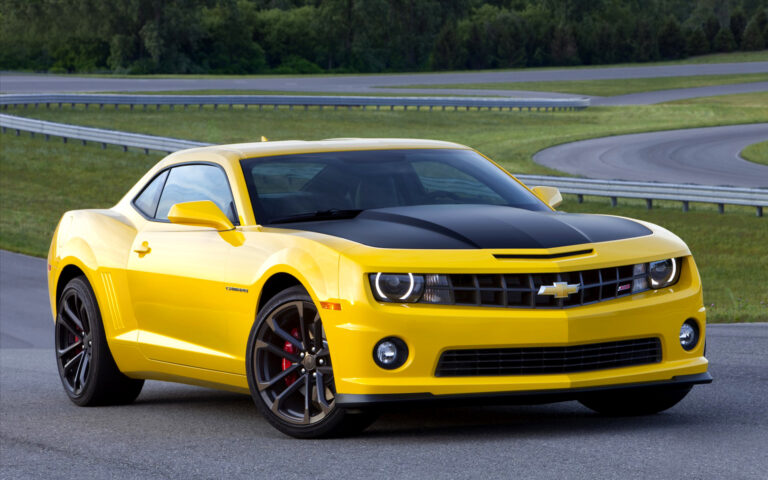What’s The Best Car Stereo Brand: A Comprehensive Guide to Elevating Your In-Car Audio Experience
What’s The Best Car Stereo Brand: A Comprehensive Guide to Elevating Your In-Car Audio Experience cars.truckstrend.com
In an age where our vehicles serve as extensions of our living spaces, the quality of our in-car entertainment system has never been more important. For many, the daily commute or long road trip is transformed by the power of music, podcasts, or audiobooks. A high-quality car stereo system isn’t just about making noise; it’s about delivering an immersive, clear, and engaging audio experience that rivals your home setup. But with a plethora of manufacturers vying for your attention, the perennial question arises: "What’s the best car stereo brand?"
This isn’t a simple question with a single, definitive answer. The "best" car stereo brand is highly subjective, depending on individual needs, budget, vehicle compatibility, and desired features. What constitutes "best" for an audiophile seeking pristine sound clarity might be entirely different from someone prioritizing seamless smartphone integration or powerful bass for their daily drive. This comprehensive guide will dissect the factors that define excellence in car audio, introduce you to the leading contenders, and equip you with the knowledge to make an informed decision tailored to your unique preferences.
What’s The Best Car Stereo Brand: A Comprehensive Guide to Elevating Your In-Car Audio Experience
Defining "Best": A Multifaceted Approach to Car Audio Excellence
Before we dive into specific brands, it’s crucial to understand the criteria by which car stereo brands are judged. The "best" brand often excels in a combination of these areas:
- Sound Quality: This is paramount for many. It encompasses clarity, dynamic range, frequency response, and the ability to reproduce audio faithfully without distortion. Brands known for superior digital-to-analog converters (DACs) and advanced sound processing often stand out here.
- Features and Connectivity: Modern car stereos are hubs of connectivity. Key features include Apple CarPlay, Android Auto, Bluetooth streaming, USB inputs, auxiliary inputs, satellite radio compatibility, navigation, and camera inputs (front/rear). The intuitiveness and responsiveness of these features are critical.
- User Interface (UI) and Ergonomics: A great stereo is easy to use while driving. This means intuitive menus, responsive touchscreens (if applicable), well-placed physical buttons, and clear displays that minimize distraction.
- Build Quality and Durability: A car stereo operates in a demanding environment – vibrations, temperature fluctuations, and constant use. Reputable brands use high-quality components designed to withstand these conditions for years.
- Reliability and Longevity: No one wants a stereo that fails prematurely. Brands with a track record of consistent performance and minimal defects are highly valued.
- Brand Reputation and Support: A strong reputation built on customer satisfaction, innovation, and reliable after-sales service is a significant indicator of a good brand.
- Value for Money: This isn’t just about being cheap; it’s about the balance between price, features, performance, and durability. Some brands offer excellent performance at various price points.
- Aesthetics and Vehicle Integration: The stereo should look good in your dashboard and ideally integrate seamlessly with your vehicle’s existing controls (e.g., steering wheel controls).
Top Contenders: Leading Car Stereo Brands Analyzed
While there’s no single "best," several brands consistently rank at the top for various reasons. Here’s a closer look at the market leaders:
Pioneer
Pioneer is arguably one of the most recognizable names in car audio, boasting a legacy of innovation and quality. They offer a vast range of products, from entry-level head units to high-end competition-grade components.
- Key Strengths: Known for robust features, excellent sound processing (e.g., EQ settings, time alignment), reliable performance, and a user-friendly interface. Pioneer was among the first to widely adopt Apple CarPlay and Android Auto. Their NEX series is particularly popular for advanced connectivity.
- Typical Product Categories: Car head units (single-DIN, double-DIN, modular), speakers, subwoofers, amplifiers, and marine audio.
- Ideal For: Users seeking a feature-rich experience, strong sound customization options, and proven reliability across various price points.
Kenwood
Kenwood is another long-standing giant in the car audio industry, often competing head-to-head with Pioneer. They are renowned for their strong emphasis on sound quality and comprehensive feature sets.
- Key Strengths: Excellent sound quality, often featuring high-resolution audio support and advanced DSP (Digital Sound Processor) capabilities. Their units are known for responsive touchscreens, extensive connectivity options, and durable builds. Kenwood often includes built-in Garmin navigation in some of their higher-end models.
- Typical Product Categories: Head units, speakers, amplifiers, subwoofers, and dash cams.
- Ideal For: Audiophiles, those who prioritize superior sound processing and navigation integration, and users looking for a feature-packed yet intuitive system.
Alpine
Alpine has cultivated a reputation as a premium brand, particularly favored by audiophiles and those seeking a high-end experience. They often focus on larger screens and specialized sound technologies.
- Key Strengths: Exceptional sound clarity, powerful built-in amplifiers, and innovative features like their "Halo" floating screen designs (iLX-F series) that bring large displays to vehicles that couldn’t traditionally accommodate double-DIN units. They also offer excellent vehicle-specific integration solutions.
- Typical Product Categories: Head units (including large-screen specialty units), speakers, subwoofers, amplifiers, and advanced sound processors.
- Ideal For: Users willing to invest in premium sound quality, large display real estate, and vehicle-specific integration, often for an enhanced audio experience.
Sony
Sony brings its vast consumer electronics expertise to the car audio market, offering user-friendly interfaces and strong integration with other Sony devices.
- Key Strengths: Intuitive user interfaces, clear displays, good sound quality for the price, and reliable performance. Their head units often boast quick boot-up times and responsive touchscreens. They are a good option for those seeking a straightforward, reliable upgrade.
- Typical Product Categories: Head units, speakers, and subwoofers.
- Ideal For: Users looking for a well-rounded, user-friendly system from a trusted electronics brand, often at a competitive price point.
JVC
JVC, often paired with Kenwood (as they are part of the same parent company, JVCKenwood), offers a strong value proposition, providing solid performance and features without breaking the bank.
- Key Strengths: Excellent value for money, reliable performance, and a good array of features including Apple CarPlay and Android Auto in many models. They often share similar core technologies with Kenwood, offering a slightly more budget-friendly alternative.
- Typical Product Categories: Head units, speakers, and amplifiers.
- Ideal For: Budget-conscious buyers who still want modern features and reliable performance without compromising too much on quality.
Other Notable Brands
- Clarion: Known for durable, high-quality audio, particularly in marine applications.
- Rockford Fosgate / JL Audio / Kicker: While they also make head units, these brands are often considered specialists in amplifiers, subwoofers, and high-performance speakers, catering to serious bass enthusiasts and competitive audio setups.
- Blaupunkt: A historic German brand known for its sound quality and robust build, though its market presence has evolved over time.
Choosing the Right Brand for YOU: Important Considerations
Navigating the vast array of options requires a strategic approach. Here’s what to consider:
- Your Budget: Set a realistic budget from the outset. This will significantly narrow down your choices. Remember to account for installation costs, dash kits, wiring harnesses, and potential speaker upgrades.
- Your Vehicle’s Compatibility: Not all stereos fit all cars. Check your car’s dash opening (single-DIN, double-DIN, or proprietary). You may need a specific dash kit and wiring harness to integrate the new stereo seamlessly and retain features like steering wheel controls.
- Your Listening Habits & Priorities:
- Audiophile: Focus on brands known for high-resolution audio support, advanced DSPs, and premium components (e.g., Alpine, higher-end Kenwood/Pioneer).
- Bass Enthusiast: Consider brands with strong subwoofer outputs, bass boost features, and perhaps look at dedicated amplifier/subwoofer brands (Rockford Fosgate, JL Audio).
- Feature-Seeker: Prioritize Apple CarPlay/Android Auto, navigation, multiple camera inputs, and extensive connectivity (Pioneer, Kenwood, Alpine, Sony).
- Casual Listener: Reliability, ease of use, and basic connectivity might be your main drivers (Sony, JVC, entry-level Pioneer/Kenwood).
- Desired Features: Make a list of must-have features (e.g., Bluetooth, touchscreen, specific smartphone integration) versus nice-to-haves.
- Future Expandability: If you plan to upgrade speakers, add an amplifier, or a subwoofer later, ensure your chosen head unit has sufficient pre-amp outputs (RCA outputs) and proper crossover controls.
- Installation Method: Will you DIY or opt for professional installation? Some units are more complex to install than others, especially those requiring integration with vehicle-specific systems.
Beyond the Head Unit: A Holistic Approach to Car Audio
It’s crucial to understand that the head unit (the stereo itself) is just one component of your car’s audio system. Even the "best" head unit won’t sound great if paired with poor speakers. For truly exceptional sound, consider a holistic approach:
- Speakers: Upgrading factory speakers is often the most impactful sound improvement after the head unit. Look for component speakers (separate woofers, tweeters, and crossovers) for superior sound staging, or coaxial speakers for simpler installation.
- Amplifiers: An external amplifier provides clean, powerful current to your speakers, vastly improving clarity, volume, and dynamic range compared to the head unit’s built-in amplifier.
- Subwoofers: For impactful bass, a dedicated subwoofer (and often a separate amplifier to power it) is essential.
- Sound Deadening: Applying sound deadening material to doors, trunk, and floor can dramatically reduce road noise and vibrations, allowing your audio system to perform at its best.
- Digital Sound Processors (DSPs): For ultimate sound customization, a DSP allows for precise tuning of equalization, time alignment, and crossovers, optimizing the sound for your specific vehicle’s acoustics.
Tips for Making Your Decision
- Read Reviews: Consult professional reviews from reputable car audio publications and, more importantly, user reviews on retail sites. Look for recurring themes regarding performance, reliability, and user experience.
- Listen to Demos: If possible, visit a car audio specialist store that has demo units installed. Listen to different brands and models with your preferred music.
- Consult Specialists: Speak with knowledgeable staff at car audio shops. They can offer insights into compatibility, installation challenges, and recommend systems based on your specific car and budget.
- Consider Bundles: Some retailers offer packages that include a head unit, speakers, and even an amplifier, which can provide better value and ensured compatibility.
Challenges and Solutions
- Compatibility Issues: Modern cars often have complex electrical systems. Use vehicle-specific wiring harnesses (like Metra or PAC Audio) and dash kits to ensure proper fit and functionality retention.
- Installation Complexity: While some basic head unit replacements are DIY-friendly, integrating steering wheel controls, cameras, or advanced features often requires professional expertise. Don’t hesitate to seek help to avoid damage.
- Overwhelming Choices: Start by defining your absolute "must-have" features and your budget. This will significantly narrow down the options.
- Budget Creep: It’s easy to get carried away. Stick to your initial budget, but be prepared for minor adjustments if a significant upgrade offers disproportionate value.
Car Stereo Brand Price Comparison Table
Please note that prices are highly approximate and can vary significantly based on model, features, retailer, sales, and whether installation is included. This table represents typical ranges for popular product types within each brand’s lineup.
| Brand | Typical Product Categories | Key Strengths | Typical Price Range (Head Units) | Typical Price Range (Speakers – Pair) |
|---|---|---|---|---|
| Pioneer | Head Units, Speakers, Subs, Amps, Marine Audio | Feature-rich, strong DSP, reliable, wide range of options, user-friendly UI | $150 – $1200+ | $50 – $300+ |
| Kenwood | Head Units, Speakers, Amps, Subs, Dash Cams | Excellent sound quality, high-res audio, advanced DSP, Garmin navigation (some models) | $180 – $1500+ | $60 – $350+ |
| Alpine | Head Units (incl. large-screen), Speakers, Amps, Subs, DSPs | Premium sound, innovative designs (Halo screens), vehicle-specific integration | $300 – $2000+ | $80 – $500+ |
| Sony | Head Units, Speakers, Subwoofers | User-friendly, quick boot-up, reliable, good value, sleek design | $120 – $800+ | $40 – $250+ |
| JVC | Head Units, Speakers, Amps | Excellent value, solid performance, modern features (CarPlay/Android Auto) | $100 – $600+ | $30 – $200+ |
| Clarion | Head Units, Marine Audio, Speakers | Durable, robust, good for marine/outdoor use, solid sound | $100 – $500+ | $40 – $200+ |
| Rockford Fosgate | Amps, Subs, Speakers, Head Units | Powerful bass, high-performance, durable, competition-grade audio | $200 – $700+ | $70 – $400+ |
| JL Audio | Amps, Subs, Speakers, DSPs | Top-tier audiophile sound, high-end bass, precision engineering | $400 – $1500+ | $100 – $800+ |
| Kicker | Amps, Subs, Speakers, Head Units | Punchy bass, robust, good value in performance-oriented audio | $150 – $600+ | $50 – $300+ |
Note: "Head Units" typically refers to receivers with Apple CarPlay/Android Auto and touchscreens. Basic receivers without these features can start much lower.
Frequently Asked Questions (FAQ)
Q1: Is a more expensive car stereo always better?
A1: Not necessarily. While higher prices often correlate with better sound components, more features, and superior build quality, diminishing returns apply. The "best" value is found when the stereo meets your specific needs and budget, rather than simply being the most expensive.
Q2: Can I install a new car stereo myself?
A2: It depends on your technical skills and the complexity of the installation. Basic single-DIN units in older cars are often DIY-friendly with the right tools and wiring harnesses. Modern double-DIN units with steering wheel control integration, camera inputs, or complex wiring often benefit from professional installation to avoid issues and ensure all features work correctly.
Q3: Do I need to buy new speakers if I get a new head unit?
A3: While a new head unit can improve the sound from your factory speakers by providing cleaner power and better processing, upgrading your speakers is often the most significant improvement you can make to sound quality. For the "best" experience, new speakers are highly recommended.
Q4: What are Apple CarPlay and Android Auto?
A4: These are smartphone integration platforms that mirror key apps (navigation, music, messaging, calls) from your iPhone or Android phone onto your car’s stereo display. They offer a safer, more intuitive way to use your phone while driving, controlled by touch, voice, or the stereo’s physical buttons.
Q5: What is a DSP in car audio?
A5: DSP stands for Digital Sound Processor. It’s a component (either built into the head unit or a separate unit) that allows for precise manipulation of the audio signal. This includes equalization, time alignment (to make sound reach your ears simultaneously from all speakers), and crossover adjustments, allowing for highly customized and optimized sound quality for your car’s unique acoustics.
Q6: Will a new car stereo void my car’s warranty?
A6: Generally, no. Under the Magnuson-Moss Warranty Act in the U.S., a car manufacturer cannot void your entire vehicle warranty simply because you installed an aftermarket part, unless they can prove that the aftermarket part directly caused the failure of a warrantied component. However, any issues directly caused by the stereo or its installation would not be covered by the car’s warranty. It’s always wise to use proper installation techniques or seek professional help.
Q7: How much should I spend on a car stereo?
A7: This is highly personal. A decent entry-level head unit with Bluetooth and basic features can start around $100-$200. For Apple CarPlay/Android Auto, expect to pay $250-$500+. High-end units with advanced features, navigation, and superior sound components can easily go over $1000. It’s best to set a budget based on your priorities and then look for the best option within that range.
Conclusion
There is no single "best" car stereo brand that fits every need. The ideal choice is a highly personal one, dictated by your budget, desired features, vehicle compatibility, and ultimately, your ears. Brands like Pioneer, Kenwood, Alpine, Sony, and JVC consistently lead the market, each offering unique strengths and catering to different segments of the car audio enthusiast community.
By understanding what defines quality in car audio, meticulously considering your individual requirements, and looking beyond just the head unit to the entire audio system, you can confidently navigate the options. Whether you prioritize pristine sound, cutting-edge features, or robust reliability, the perfect car stereo brand for you is out there, ready to transform your driving experience into a symphony on wheels. Happy listening!





